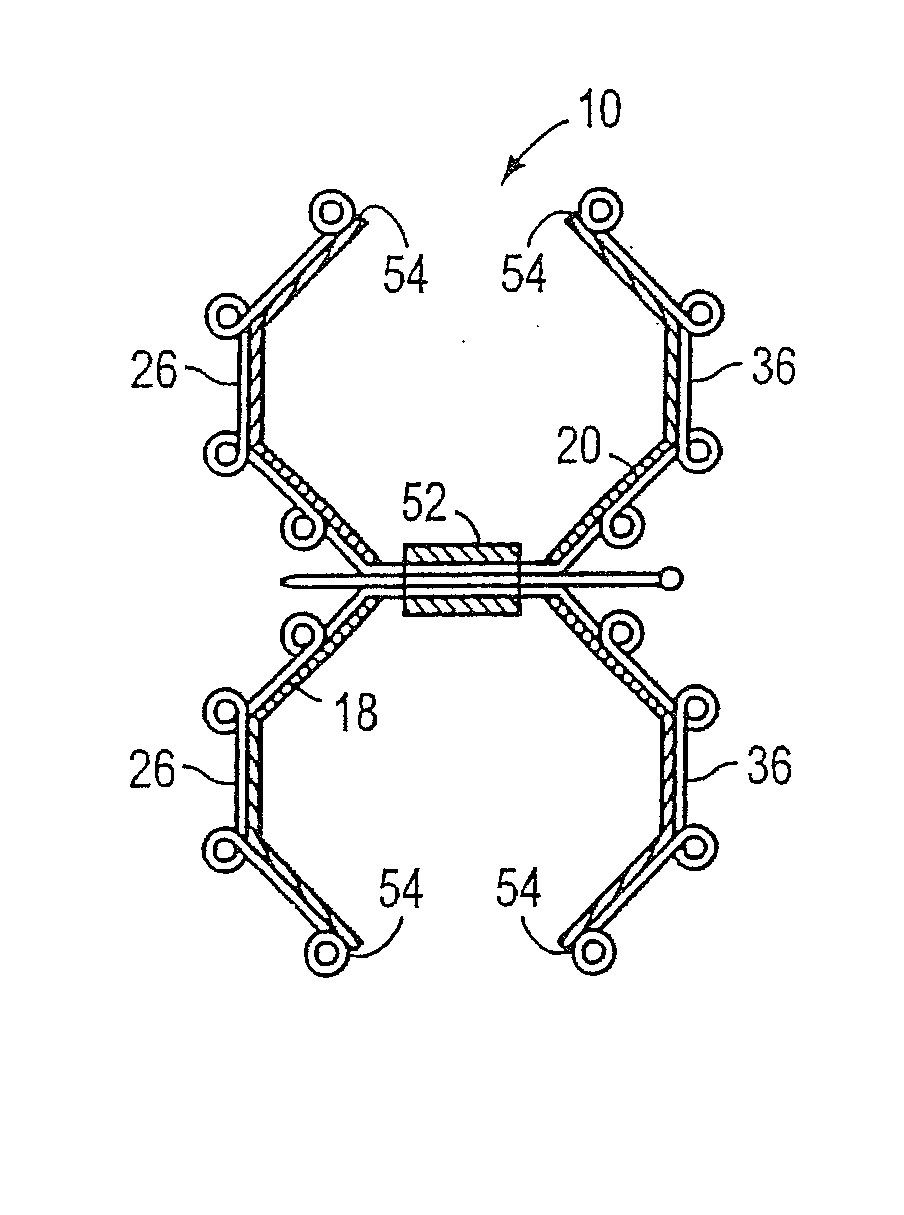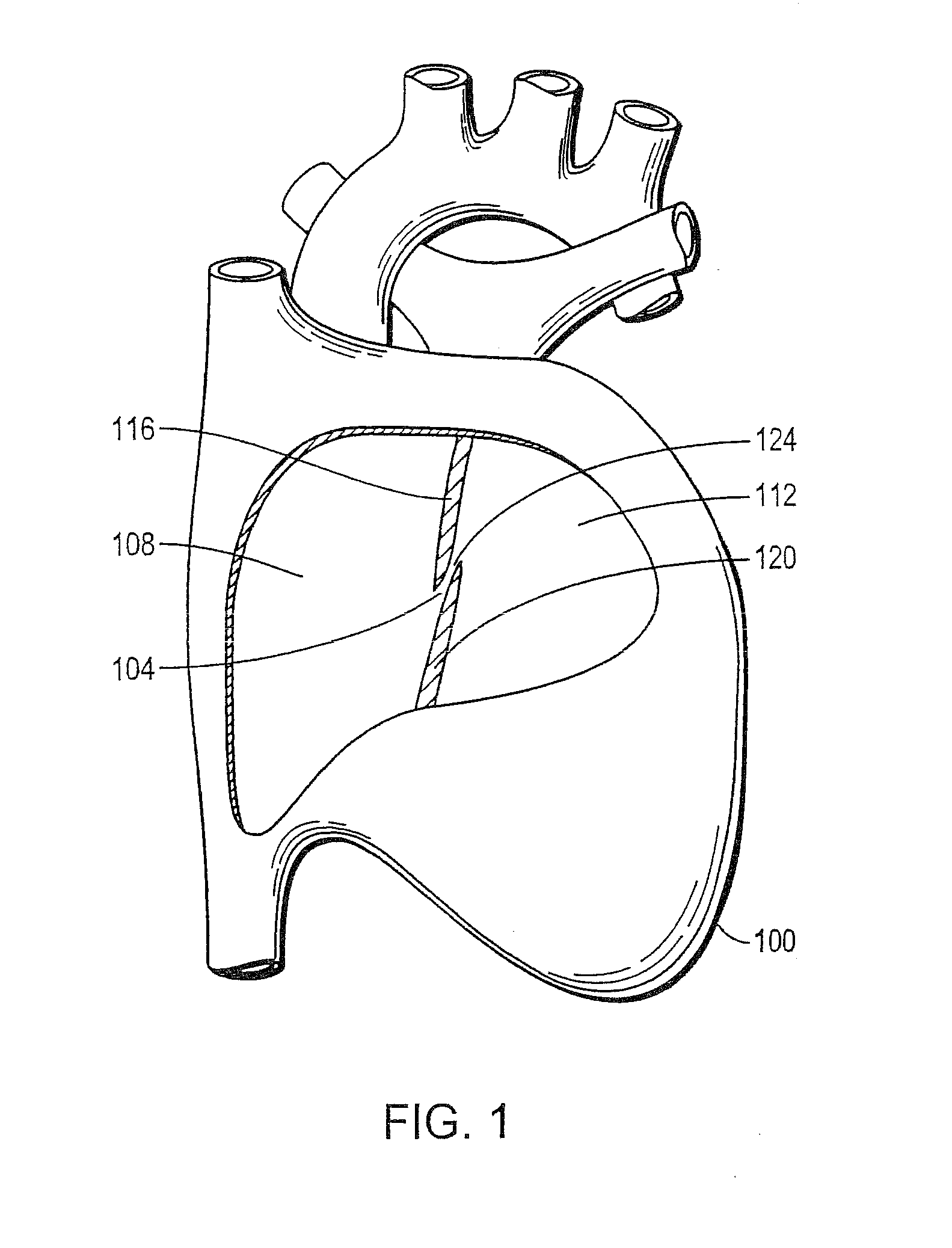Device with Biological Tissue Scaffold for Percutaneous Closure of an Intracardiac Defect and Methods Thereof
a biological tissue and intracardiac defect technology, applied in the field of devices, can solve the problems of devices suffering, particularly worrisome patients, and heart failure, and achieve the effect of reducing or minimizing the size of the devi
- Summary
- Abstract
- Description
- Claims
- Application Information
AI Technical Summary
Benefits of technology
Problems solved by technology
Method used
Image
Examples
Embodiment Construction
[0028]The present invention provides an intracardiac occluder for the repair of intracardiac defects, such as, for example, a patent foramen ovale, an atrial septal defect, a ventricular septal defect, and left atrial appendages. The intracardiac occluder includes a structural framework and a biological tissue scaffold adhered thereto.
[0029]FIG. 1 depicts a cutaway view of a heart 100. The heart 100 includes a septum 104 that divides a right atrium 108 from a left atrium 112. The septum 104 includes a septum primum 116, a septum secundum 120, and an exemplary intracardiac defect 124, which is to be corrected by the intracardiac occluder of the present invention, between the septum primum 116 and the septum secundum 120. Specifically, a patent foramen ovale 124 is shown as an opening through the septum 104. The patent foramen ovale 124 provides an undesirable fluid communication between the right atrium 108 and the left atrium 112. Under certain conditions, a large patent foramen ova...
PUM
| Property | Measurement | Unit |
|---|---|---|
| length | aaaaa | aaaaa |
| bioresorbable | aaaaa | aaaaa |
| corrosion resistant | aaaaa | aaaaa |
Abstract
Description
Claims
Application Information
 Login to View More
Login to View More - R&D
- Intellectual Property
- Life Sciences
- Materials
- Tech Scout
- Unparalleled Data Quality
- Higher Quality Content
- 60% Fewer Hallucinations
Browse by: Latest US Patents, China's latest patents, Technical Efficacy Thesaurus, Application Domain, Technology Topic, Popular Technical Reports.
© 2025 PatSnap. All rights reserved.Legal|Privacy policy|Modern Slavery Act Transparency Statement|Sitemap|About US| Contact US: help@patsnap.com



